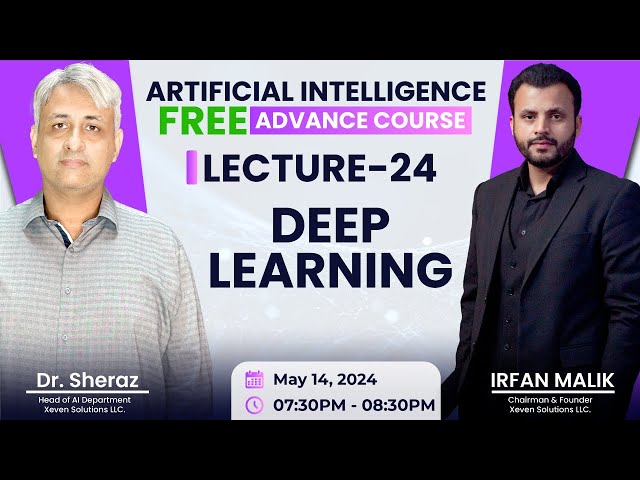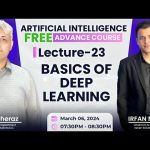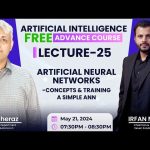
The Deep Dive: Understanding Deep Learning, NLP, and the Power of RAG in Modern AI
Imagine you’re trying to teach a computer to spot cats in photos or predict if someone’s sick from data. Old methods work okay for simple stuff, but what if the info is messy, like videos or spoken words? That’s where deep learning steps in, changing how we handle tough tasks in AI. This post breaks it down from basic machine learning to hot topics like natural language processing and retrieval augmented generation. You’ll see how these tools open doors for jobs and real-world fixes, especially with student-led videos on the Hope to Skill channel showing practical tips.
Introduction: Beyond Conventional AI and the Hope to Skill Initiative
The Genesis of Practical AI Education
The Hope to Skill channel started after a break to focus on real needs. Students ask questions about AI and ML, and they make short videos to answer them. Our team checks each one with experts in AIML to ensure it’s solid.
These clips go straight to the channel. No more hunting through thousands of videos on the main page. If a new student joins and asks the same thing, the answer waits there, clear and ready.
This setup builds a growing library of bite-sized lessons. It helps everyone learn fast, without getting lost in big content dumps.
Mapping the AI Landscape: From ML to Deep Learning
Machine learning kicked off with ideas like general AI basics. Then came conventional ML, covering supervised learning with things like regression and classification.
Examples make it stick: regression predicts numbers, like house prices. Classification sorts categories, like spam emails.
Unsupervised learning finds patterns without labels, like grouping similar customers. Self-supervised adds a twist, using data to teach itself.
All this falls under discriminative AI. It takes inputs and sorts them, such as “is this a cat photo?” or “COVID positive or not?” Deep learning builds on this but handles wild data better, like text or images.
Section 1: Deconstructing Machine Learning: The Discriminative Era
Conventional ML: Supervised, Unsupervised, and Discriminative AI
Discriminative AI shines at splitting data into groups. You feed it info, and it decides, like checking if a picture shows a cat or dog.
Supervised learning uses labeled data. Think training with examples where answers are marked right or wrong.
Unsupervised skips labels. It spots clusters on its own, useful for finding hidden trends in sales data.
Self-supervised learning pulls labels from the data itself. This keeps things efficient without extra tagging work.
These methods form the base of discriminative AI. They classify but stick to structured info, like neat tables of numbers.
The Limitations of Conventional Machine Learning
Conventional ML needs you to pull out features by hand. For images, you might pick edges or colors as key traits.
This works for organized data, like spreadsheets. But audio files or videos? They confuse the system.
Human experts design these features, using math tricks like Fourier transforms. Before 2012, most research chased better ways to grab these.
The catch? Bad features mean weak results. You’re guessing what the machine needs, and it costs time and money.
Feature engineering turned into a job field. Companies call with piles of data, asking how to turn it into useful bits for health portals or bank systems.
You start by knowing the goal. Like spotting a red car on the road – your brain highlights matches once you know what to look for.
Data engineering mixes science and art. Clean the data first, remove junk, then transform it. Only after that can ML start.
One big issue: it relies on structured data. Unstructured stuff, like EEG signals, needs manual tweaks to fit.
Section 2: The Deep Learning Revolution: Neural Networks Explained
Deep Learning: A Subdomain Built on Neural Networks
Deep learning is ML’s advanced branch. It uses neural networks to tackle complex, unstructured data.
These networks boost learning power way beyond old models. You do similar tasks but with deeper results.
Tools like TensorFlow and PyTorch make it real. They let you build and test networks easily.
Last time, we covered playgrounds in TensorFlow. Layers and settings control how it learns.
Deep learning fits language tasks, computer vision, and speech. It’s behind most AI breakthroughs now.
The Building Block: Understanding the Artificial Neuron
Neurons aren’t brain cells. They’re basic math functions that crunch numbers.
Take ReLU, the top choice. It grabs two numbers – zero and the input – and picks the bigger one.
Simple, right? But it’s everywhere in hidden layers of CNNs or vision transformers.
You give it inputs like 0 and 7. It spits back 7. That’s it – no fancy biology.
Think of it as finding the max in a pair. Kids learn this in early grades, yet it’s key to deep learning.
Architecture: Layers and Transformation
Neural networks stack neurons in layers. Input layer takes raw data.
Hidden layers – one or more – process it step by step. Output layer gives the final call.
Each layer links to the next. Data flows through, changing along the way.
Deep learning fixes feature woes. Layers auto-pull traits from mess, like turning pixels into shapes.
Train the network, and it tunes itself. No more human guesses – the machine picks what works best.
First layer tweaks basics. Second builds on that. By the end, it nails predictions.
This chain means you skip manual work. Layers extract features layer by layer, optimized for the job.
In ML, a costly expert might fail at features. Deep learning does it cheap and smart.
Section 3: NLP and the Shift to Generative AI
Natural Language Processing (NLP): From Processing to Understanding
NLP handles text as input. It’s AI for words, like in PDFs or emails.
It started with processing basics. Now it’s about grasping and creating language.
Old ways used rules for stemming or TF-IDF. Neural nets mostly replace that now.
Grammar fixes in Word? Once rule-based, now smart with networks.
Apps include spam filters in Gmail. They catch junk before it hits your inbox.
Sentiment checks see if reviews are positive or negative. We built a quick demo for that.
The Rise of Generative AI (GenAI)
GenAI goes beyond sorting. It creates new stuff, like text or images.
Unlike narrow discriminative AI, it handles multiple tasks. An LLM can classify moods and write stories.
GPT-4 Omni mixes speech, text, and images in real time. It changes chats forever.
Real-time translation breaks language walls. In places like Kyrgyzstan, apps turn English to Russian on the fly.
This sparks ideas for education and business. No more barriers for tourists or teams.
Why memorize defs? Clients want your take on apps. Use GenAI to cut mental work, like drafting replies via voice.
Real-World Impact and Opportunities in NLP/GenAI
GenAI saves time. Voice-to-text drafts pro emails in seconds, not hours.
Image tools like Stable Diffusion create art from words. Music and video follow suit with Sora.
Question-answering bots cut call center needs by 70% in the US. Books translate in minutes.
Language gaps stall growth in rich countries. Real-time tools fix that for trade and learning.
Jobs shift, not vanish. Build on this – think custom portals or health apps.
Section 4: Mastering Information Retrieval with RAG
Introducing Retrieval Augmented Generation (RAG)
RAG blends data, databases, and questions. It’s key for firm answers from company info.
Vector stores hold data as math points. Queries pull matches fast.
This gets you in with clients. Show how LLMs use their private data safely.
Every app ties to data, storage, and asks. Bots and models all fit here.
The Mechanics of RAG: Retrieve, Augment, Generate
Retrieve: Query scans for bits. From a 200-page book, it grabs pages 15, 35, 204.
These chunks sit separate. No order, just relevant pieces from the source.
Augment: Mix them with model smarts. Fill gaps to make sense, like linking ideas.
It’s like grabbing tech notes from an engineer, then adding business spin.
Generate: LLM crafts a smooth reply. Human-readable, tied to the facts.
In teams, devs give raw info. You retrieve, tweak with sense, and pitch to clients.
This cycle turns broken data into clear stories. Databases make it scale.
Conclusion: Future-Proofing Your AI Career
Deep learning flips ML by auto-learning features through neuron layers. NLP evolves to GenAI, creating content while understanding text, speech, and more. RAG ties it together, pulling data to fuel smart, reliable responses.
You see the flow: hand-picked features in old ML give way to machine-tuned ones in deep learning, then creative outputs in GenAI. RAG layers this onto real business data for trust.
To stay ahead, study LLM costs and token basics. Peek at RAG code, like vector tricks. For next steps, list five new app ideas using RAG – from health chats to global trade tools. Dive in, build something, and watch opportunities grow.


